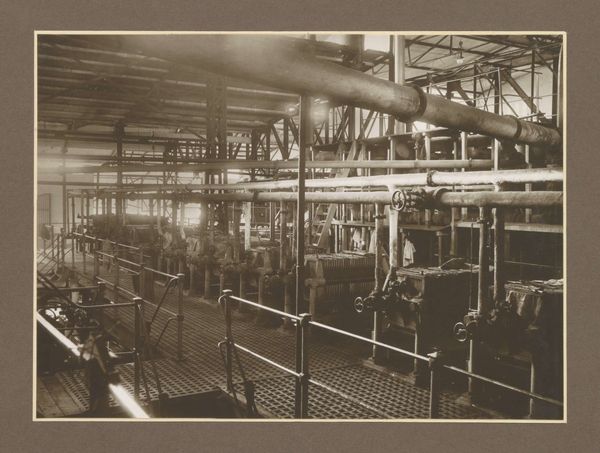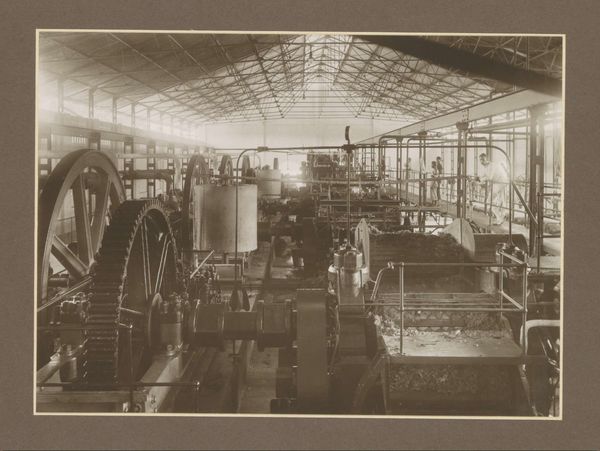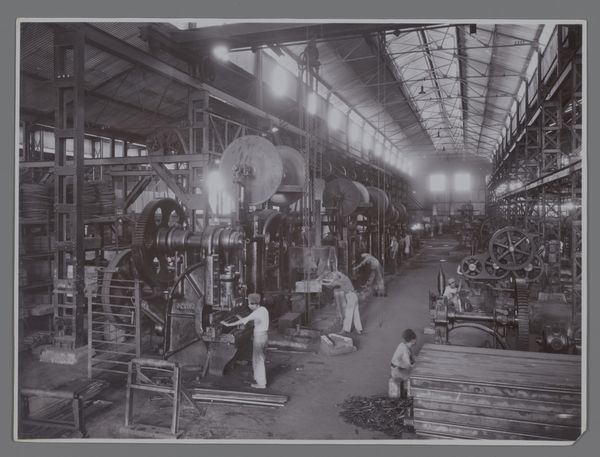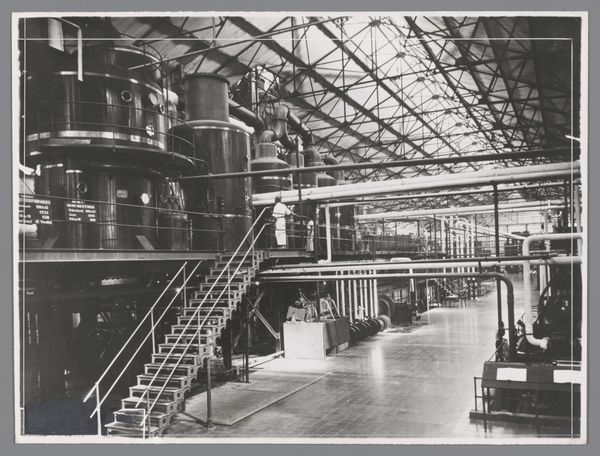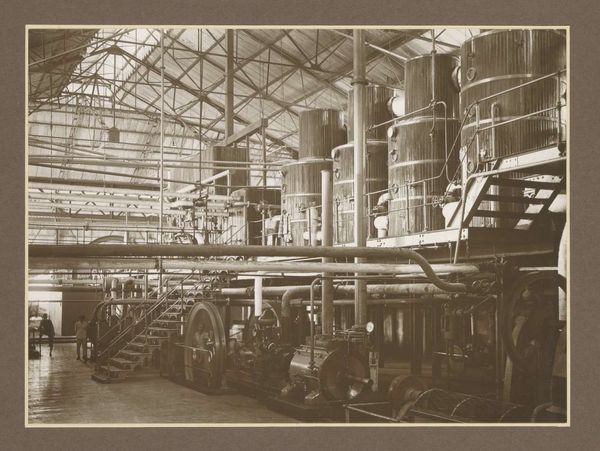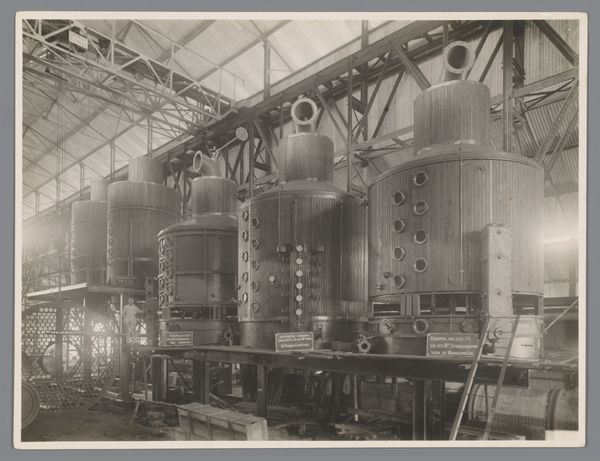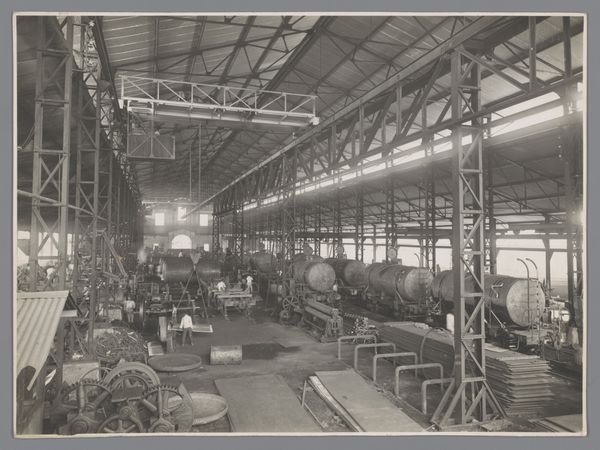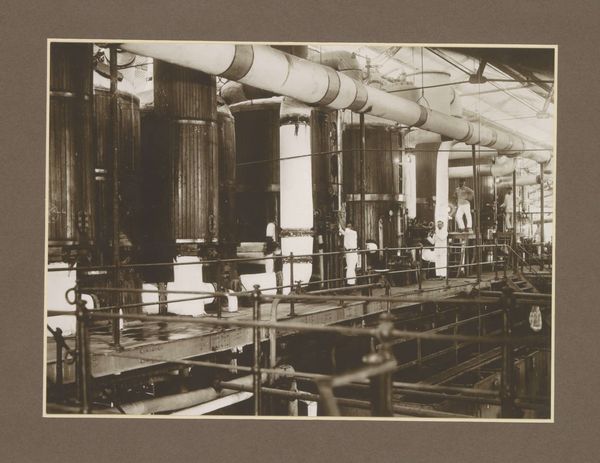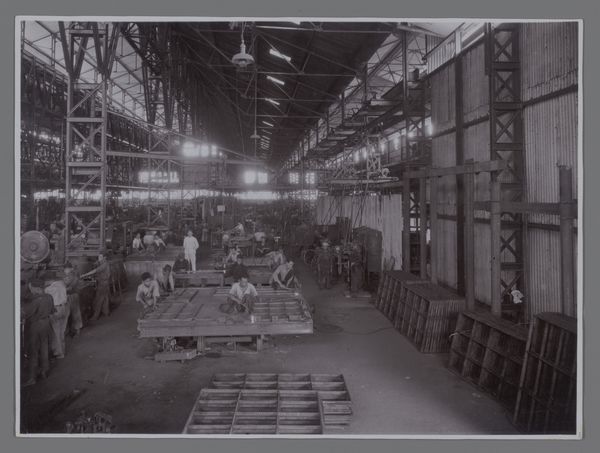
photography, gelatin-silver-print
#
archive photography
#
photography
#
historical photography
#
gelatin-silver-print
#
line
#
cityscape
#
modernism
Dimensions: height 297 mm, width 450 mm
Copyright: Rijks Museum: Open Domain
Editor: This photograph, "Hall with machines of sugar factory Goedo te Djombang on Java," taken by Isken sometime between 1925 and 1930, shows a cavernous industrial interior. There's a powerful stillness to it, a sense of dormant potential. How do you read the space captured here? Curator: The image presents a symphony of industrial forms, doesn’t it? More than just showing machinery, it echoes a particular era. What cultural aspirations, do you think, are embedded in this portrayal of industrial progress? Editor: Well, the photograph seems to glorify the modern industrial age. Was that the intention or does it unveil something more about colonial dynamics, maybe? Curator: The colonial context cannot be ignored. Think about the sugar itself. The "sweetness" disguises labor and extraction. The towering machinery, photographed with a sense of awe, also signifies the imposition of industrial processes on the landscape and local populations. Does this visual language remind you of anything? Editor: Now that you mention it, there's a coldness. All the mechanical elements seem very removed from any human interaction. So, is that the colonial project, then – this kind of systematic dehumanization? Curator: Perhaps. Or it points to a mindset: efficiency above all else. But even in that supposed detachment, one can still glimpse the labor that keeps this factory alive. So, in effect, Isken has recorded cultural ambitions and anxieties simultaneously, in that gelatin-silver print. Editor: I hadn't considered how the very act of documenting industry could carry so many layers of meaning! Thank you, I’m going to reflect on this more. Curator: And I on the subtle colonial undertones you drew out, that often remain unnoticed.
Comments
No comments
Be the first to comment and join the conversation on the ultimate creative platform.
